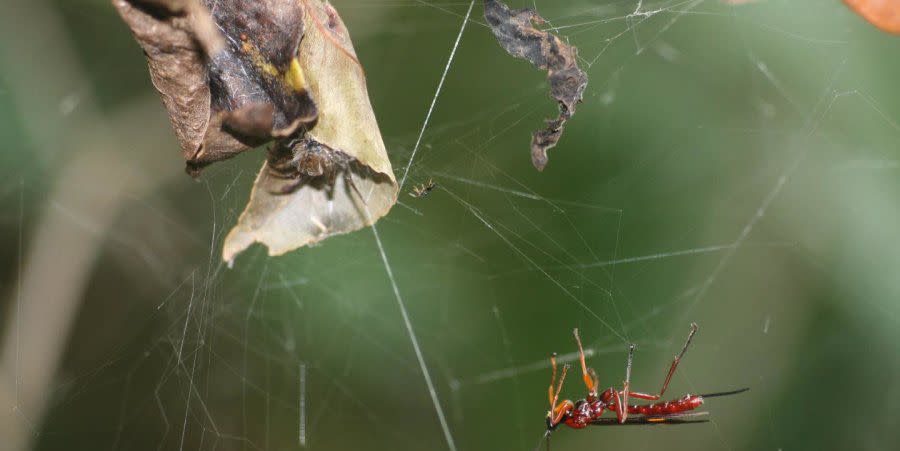How Wasps Turn Spiders Into Obedient Zombies

There's no real human equivalent for the zombified attack, one of the most jarring styles of survival in the animal kingdom. For proof of how perplexing these attacks are, consider what parasitoid wasps do to spiders.
Recently, scientists from the Smithsonian Tropical Institute and the Universidade Federal de Uberlândia in Brazil tried to determine how the parasitoid wasp is able to generate so many changes within spiderwebs. They learned that the wasp, which comes from the wasp family Ichneumonidae within the insect order Hymenoptera, ensures the survival of its species by hijacking the brain of a spider.
First, the wasp's tiny larvae hitch onto the spider's abdomen. While this doesn't give the wasp immediate access to the spider's nervous system, it's just a small hurdle. The larvae then inject psychotropic substances into the hemolymph, a blood-like substance in the spider's abdomen.
The hemolymph, working through the spider's small circulatory system, carries the injected substances into the central nervous system. The spider is then compelled to weave a special web to safely suspend the wasp pupa from its web, keeping the pupa out of harm's way. Once the pupa is secured, it sends the spider off to a quick, untimely death.
"Several studies suggested that sometimes the webs induced by the wasps resemble the webs that unparasitized spiders build just prior to molting," says Marcelo Gonzaga of Universidade Federal de Uberlândia in a press statement. Spider molting happens naturally when a spider sheds its exoskeleton for a larger one.
Gonzaga's team used that research and another previous discovery-that in one genus, spiders that had recently built webs had "unusually high concentrations of ecdysone [a steroid that controls molting] in their bodies"-to make a big prediction.
"The specificity of the wasp larva's effects may already be present in the spider's nervous system, in the form of its specific behavioral responses to the hormone that controls its own molting cycle," Gonzaga says in the statement. "By hacking into this system, the wasps ensure the safety of their own offspring at the expense of their host."
With a better understanding of the wasp's zombification process, scientists are eager to delve further into the somewhat horrifying process.
William Eberhard, staff scientist emeritus at the Smithsonian Tropical Research Institute, says the team was able to study zombification in more detail than ever before by looking at the precise records of spiders' behaviors contained within their cocoon and molting webs.
"We discovered that both web types vary, and more importantly, that the variations only overlap partially," Eberhard says in the statement. "The larvae probably tweak the spider's molting web construction behavior to gain added protection. The mechanisms by which these additional modifications are obtained may result from differences in the timing or amounts of ecdysone, or modifications in the ecdysone molecules themselves, but they remain to be documented."
The wasps give scientists the rare chance to study an actual zombie-making process. Usually they're just left guessing how it works by watching Game of Thrones.
Source: ScienceDaily
('You Might Also Like',)

